Body imbalance: Are you pedalling symmetrically?
Honing your cycling technique isn’t simply about ‘getting aero’. Cyclists should also consider their pedalling symmetry and the effect it can have on cycling wellbeing, as Andrew Hamilton explains
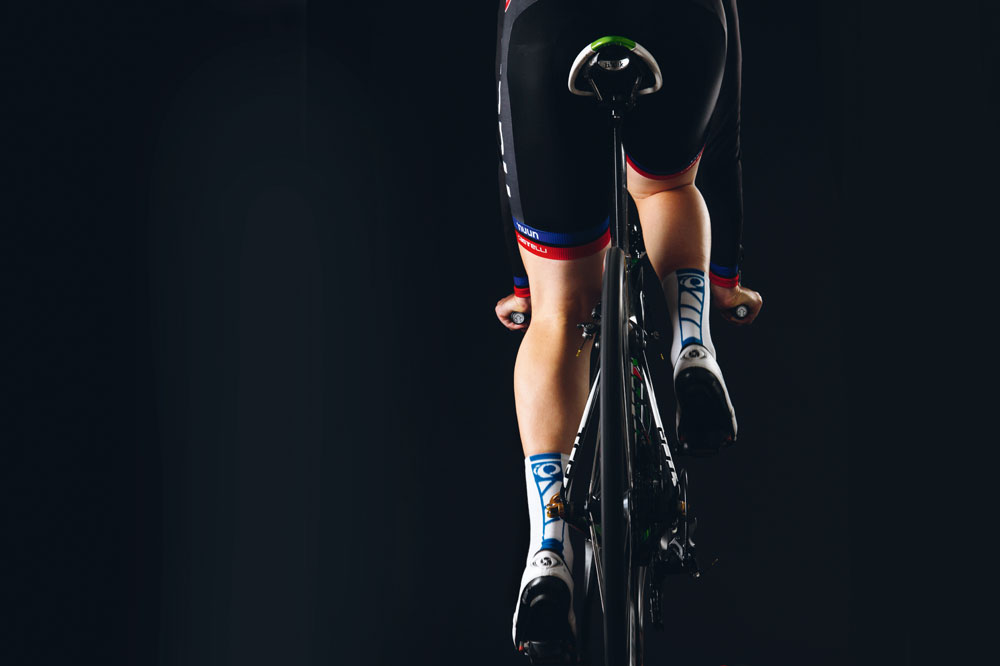
Cycling isn’t the most technically demanding sport, but that doesn’t mean that technique isn’t important.
Mastering the correct use of gears and maintaining optimum pedalling cadence to minimise fatigue are basic skills that all aspiring cyclists have to learn. And if time trialling or racing is your goal, you’ll need to learn how to ride ‘aero’ in order to slice through the air with minimal resistance. However, while all of the above are important, we can overlook something more crucial, the pedalling action itself.
In terms of the actual pedalling motion (i.e. turning the cranks), there’s very little technical advice on offer other than developing a good spinning technique. This is perhaps unsurprising; after all, by sitting on a bike with your feet clipped into the pedals, your muscle and joint movements are precisely controlled and ‘locked in’ by the arc of motion set by the pedals, which is symmetrical on each side of the body.
However, when you look at the scientific evidence, it tells a different story; a symmetrical riding position and pedalling motion on the bike doesn’t necessarily equate to symmetrical biomechanics. In plain English, your left leg may be doing significantly more work than your right or vice versa. The implications of this are twofold: firstly, because the workload is not spread evenly across your cycling muscles, you’re likely to experience premature fatigue during longer or harder rides as the side that works harder will tire earlier. Secondly, any strength imbalance could increase the risk of overuse injury.
How much asymmetry?
Studies show that the discrepancy between left and right legs can be very significant. For example, in one study, six highly trained competitive male cyclists rode a simulated 40km time trial on an SRM cycle ergometer, which measured the forces exerted by their left and right leg at the crank (1). The discrepancy between left and right leg varied through the time trial but averaged around 13 to 17 per cent.
In the final quarter of the time trial, when the cyclists upped the pace, this discrepancy diminished somewhat, but in each cyclist, the dominant leg remained dominant.
Get The Leadout Newsletter
The latest race content, interviews, features, reviews and expert buying guides, direct to your inbox!
"Strength imbalance could increase the risk of overuse injury"
In another study on pedalling asymmetry, scientists studied the pedalling biomechanics of 11 masters cyclists who regularly performed long training rides and did long-distance cycling events (2). The cyclists, whose average age was 53 years, were very experienced (riding between 4,500 and 14,000km per year) and considered themselves to have good technique. Also, none of them had sustained injuries prior to the study or were aware of any reason why they might have asymmetric pedalling biomechanics.
The cyclists were asked to complete an 18-minute incremental cycling test on a road bike equipped with an SRM crank system to very accurately measure applied force and power as the cranks rotated. The rear wheel of the bike was mounted in a Tacx ergometer and the bike was adjusted so that each rider could ride in his optimum position. During the test, the forces applied to the left and right cranks were measured at varying levels of power output and the researchers recorded the average force applied by the riders at each point of the crank revolution for both left and right sides (see figure 1).
Increasing your symmetry
Putting aside the increased risk of injury, a significant imbalance in force production between your left and right legs is a recipe for premature fatigue; having one leg working harder to compensate for the other is always going to be a less efficient way of producing sustainable power than if both legs work equally hard. Given these results, it could be a good investment of time to check your pedalling biomechanics and take steps to reduce any asymmetry.
Checking leg symmetry
Don’t assume that just because you ‘feel’ your left and right legs are working equally hard, they are! Try and get an actual measurement made at the same kind of power output that you use during training. Some stationary bikes such as Wattbike and SRM’s Training Systems cycle ergometer offer this facility.
Increasing leg symmetry
If a significant asymmetry exists, strength training for the legs can improve your pedalling efficiency and symmetry (3). Good exercises are ones where you work just one leg at a time, including the single leg press and lunges (dumbbell or barbell — see box to the left). Always work the weaker leg first, recording how many reps you can manage at a particular weight. Then work the stronger leg using the same weight and number of reps (no more). Over time the strength difference will diminish.
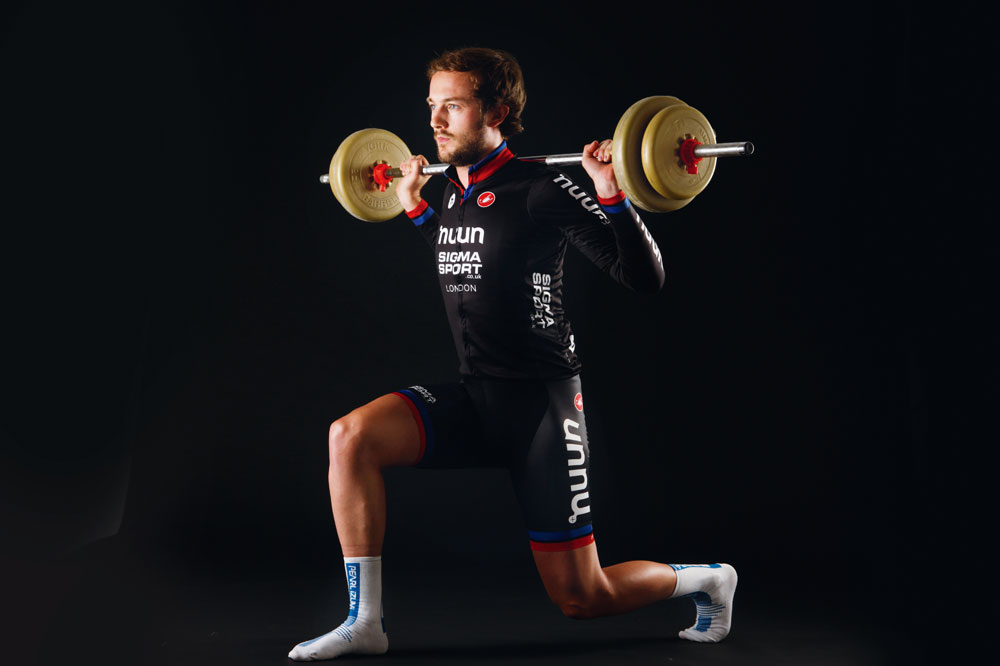
If you have access to a bike that gives you real-time info on left/right torque (e.g. Wattbike), try some ‘torque feedback’ sessions, where your goal is to keep the torque output on left and right sides as similar as possible throughout the 360° of crank rotation. Like strength training, this can be effective in correcting strength imbalances.
References
1. J Sports Med Phys Fitness. 2007 Mar;47(1):51-7
2. J Sci Cycling 2012; Vol. 1(2), 42-46
3. Int J Sports Physiol Perform. 2012 Dec;7(4):313-21
4. Physical Therapy in Sport 2010; 11: 136-142
Roller reflection
One method of training that increases pedalling efficiency and symmetry is the roller session. The balance required to ride rollers smoothly and efficiently means an even amount of pressure needs to be put through each pedal stroke. Specific roller sessions help you learn to pedal smoother, which has a knock-on effect in making each pedal stroke equal.
Doing specific leg speed drills, such as spin-outs, will improve the pedalling style and technique to make it smooth, thus increasing efficiency. Spin-out means pedalling fast against low resistance, and is a great way to ensure you are keeping the pressure on continuously throughout each revolution. As you have little resistance, you can push down excessively during the downstroke, but have to think about all parts of each stroke to prevent the pedals from running away from you.
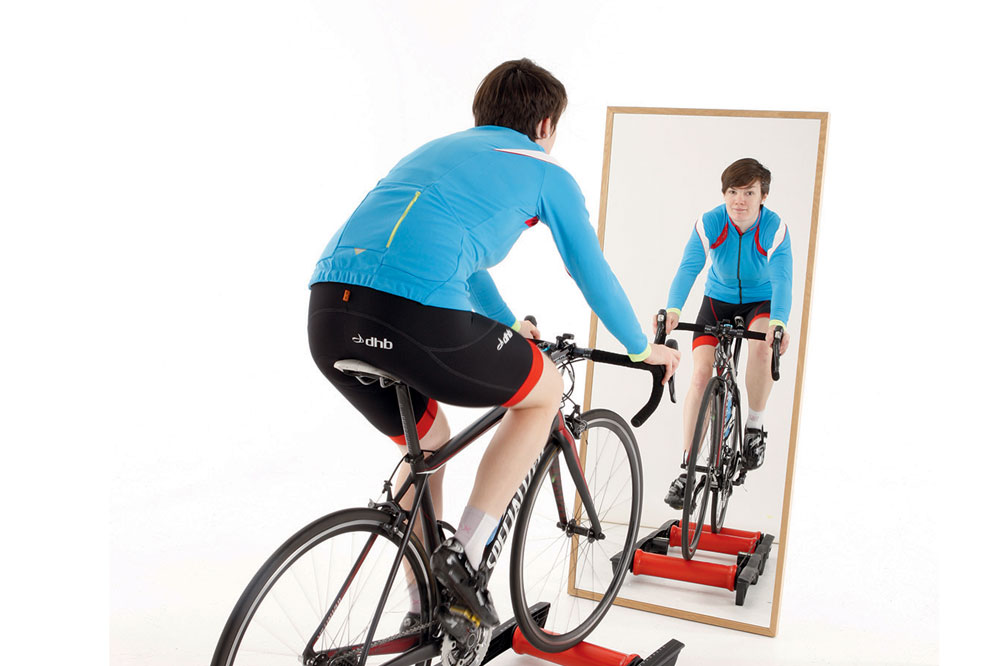
Another way to use rollers to really make your riding more symmetrical is by doing one-legged efforts. Practising these on the rollers, as opposed to the turbo, helps prevent dead spots during the pedal stroke. Using only one leg means you must engage that leg throughout each phase of the revolution. Using a cadence meter and staying in the same gear ensures you put the exact same amount of pressure through each leg, making sure both legs work at the same intensity.
These sessions will ensure equal amounts of force go through each leg, making your pedalling technique more symmetrical and equal.
Try this! Dumbbell lunges
- Holding a dumbbell in each hand, stand upright, feet at shoulder width apart with eyes fixed straight ahead.
- Starting with your weaker leg, step forward about 2-3 feet, keeping the other foot planted on the floor but allowing the heel to rise. When the front foot lands, allow the front leg to bend at the knee until the thigh is almost parallel to the floor. Check that the knee is directly over the ankle — if the knee is forward of the ankle, use a wider step; if the knee is behind the ankle, use a narrower step.
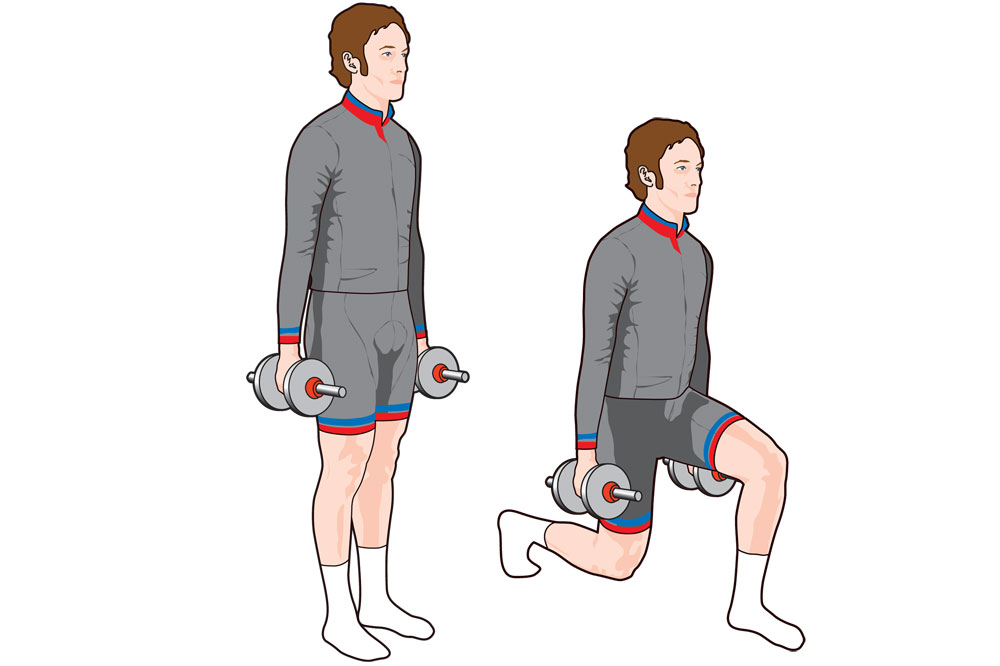
- Keeping your trunk vertical, push back using your front leg until you’re upright again without allowing the front foot to drag along the floor as it comes back to the start position.
- Repeat on your stronger leg but don’t exceed the reps achieved on your weaker leg.
- Choose an initial weight that allows you to achieve 12-15 reps with good form.
Case study
Correcting pedalling asymmetry
In November 2007, Matt Brammeier was hit by a cement mixer and left with a broken femur and a shattered fibia. He was a member of British Cycling’s Under-23 Academy at the time and is now a pro with Synergy Baku Cycling Project, plus has been on the WorldTour with Omega Pharma-Quick Step. In between is a long story of rehabilitation.
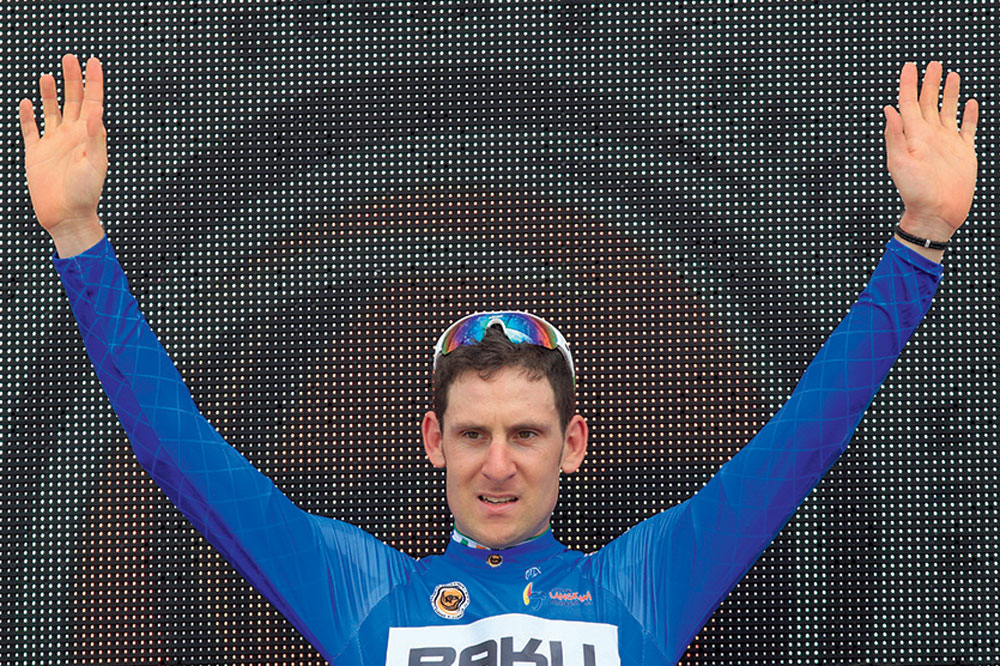
Brammeier patiently waited for his injuries to heal then went through rehab before he could think about getting race-fit. Then when he did so, another problem emerged: his right side was stronger than his left.
One muscle on his left side, the psoas, which plays an important role in stabilising the back in cycling, had almost wasted away, and there are very few specific exercises for this problem.
Brammeier performed specially designed small movements to rebuild his psoas, using stretchy Therabands for resistance. He even used some cranks equipped with a clutch mechanism that required his hip muscles to fire as they should in cycling. This provides instant feedback that helps build correct pedalling technique.
But when Brammeier resumed racing, he still had a leg strength imbalance. It took three months working with weights on his left leg only and doing daily core work but hardly riding his bike to solve the problem. And he still had to keep working on his psoas after he started riding again.
The fact that he’s a pro now is testament to Brammeier’s inner grit and patience, and to his love of cycling, which helped him get through a long and frustrating period of his life to become the five-time Irish national champion he is now.

Thank you for reading 20 articles this month* Join now for unlimited access
Enjoy your first month for just £1 / $1 / €1
*Read 5 free articles per month without a subscription

Join now for unlimited access
Try first month for just £1 / $1 / €1
Founded in 1891, Cycling Weekly and its team of expert journalists brings cyclists in-depth reviews, extensive coverage of both professional and domestic racing, as well as fitness advice and 'brew a cuppa and put your feet up' features. Cycling Weekly serves its audience across a range of platforms, from good old-fashioned print to online journalism, and video.
-
 Cycling's riders need more protection from mindless 'fans' at races to avoid another Mathieu van der Poel Paris-Roubaix bottle incident
Cycling's riders need more protection from mindless 'fans' at races to avoid another Mathieu van der Poel Paris-Roubaix bottle incidentCycling's authorities must do everything within their power to prevent spectators from assaulting riders
By Tom Thewlis Published
-
 Why Paris-Roubaix 2025 is proof that road bike tyres still have a long way to go
Why Paris-Roubaix 2025 is proof that road bike tyres still have a long way to goParis-Roubaix bike tech could have wide implications for the many - here's why
By Joe Baker Published